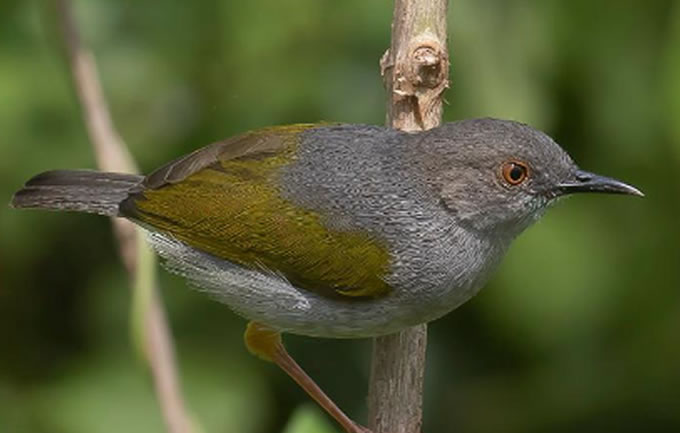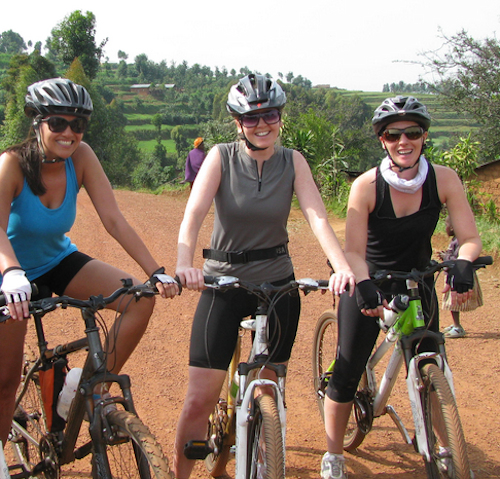This 14 Days Birding In Uganda is a special trip for any bird watcher with interests in getting to know the unique and rare bird species in Uganda. We are leaving no stone unturned for the rarity bird species in Central, western and a south western Uganda
14 Days Birding In Uganda For Specials highlights
Day 1: Bird Watching To Mabamba – Shoebill Stork
Day 2: Birding To Kaniyo Pabid – Puvell’s Illadopsis
Day 3: Birding Kaniyo Pabid And Transfer To Masindi
Day 4: Bird Watching To The Royal Mile – Ituri Batis And Chocolate Backed Kingfisher
Day 5: Birding As We Transfer To Fort Portal
Day 6: Birding To Kibale – Green Breasted Pitta
Day 7: Birding To Semliki – Special Guinea-Congo Biome Endemics
Day 8: Birding As We Transfer To Bwindi Buhoma –
Day 9 &10: Bird Watching And Optional Gorilla Tracking – Short Tailed Warbler
Day 11: Transfer To Ruhija Birding Via The Neck: Barred Long Tailed Cuckoo
Day 12: Birding Ruhija African Green Broadbill And Other Special Albertine Rift Endemics
Day 13: Early Birding As We Transfer To L.Mburo – Handsome Francolin
Day 14: Birding Mburo And Kampala Onwards – Coqui Francolin, Red-Faced Barbet And Tabora Cositicola
Day 1: Bird Watching To Mabamba – Shoebill Stork
An extensive papyrus swamp with its labyrinth of channels and lagoons, classified as an IBA (Important Bird Area) and home to several pairs of Shoebills, Uganda’s most famous avian resident. This charismatic species, the only representative in its family, is undoubtedly amongst the most sought-after birds in Africa and we’ll make special efforts today to find it by paddling through the channels by canoe.
There will of course be a good selection of classic East African water birds: Pink-backed Pelican, Long-tailed Cormorant, Goliath Heron, African Fish-Eagle, African Marsh-Harrier, Yellow-billed Duck, African Water Rail, Allen’s Gallinule, and Malachite Kingfisher along with slightly more local species such as Long-toed Plover, Blue-breasted Bee-eater, Blue-headed Coucal, Papyrus Gonolek, Papyrus Canary, Swamp Flycatcher, White-winged & Papyrus Yellow Warblers
Day 2: Birding To Kaniyo Pabid – Puvell’s Illadopsis
We start early and head north then later west where we shall have birding stops in open, cultivated, swampy scrubby areas looking out for bird species like the White-winged Widowbird, Cardinal, Red-billed and Red-headed Quelea, Red-collared and Yellow-Mantled Widowbird, Brown Twinspot, Little, Red-headed and Compact Weaver, Brown Twinspot, Grey-headed Oliveback, Pygmy and Beautiful Sunbird, Dark-chanting Goshawk, Steppe, Wahlberg’s and Long-crested Eagle, Fawn-breasted and Crimson-rumped Waxbill, Grassland-Moustached Warbler, African Black Headed Oriole, White Crested Turaco, Bronze-tailed, Lesser and Greater Blue Eared Starling, The swamps offer Rufous-bellied Heron, Shoebill, Saddle-billed Stork, Dwarf Bittern, Woolly-necked Stork, and many more. we shall carry on to Budongo Forest Reserve depending on the energy level and weather we can do a guided walk around Kanio Pabidi area of Budongo Forest south of Murchison Falls Conservation Area.
Day 3: Birding Kaniyo Pabid And Transfer To Masindi
Today star early after breakfast and enter the forest interior which is a typical Rain Forest where birding is always difficult and can be frustrating since many species will be heard than seen, however do not lose focus and hope, there rewards at times of the dull brown and near endemic skulking Puvel’s Illadopsis and this is the only spot where we can find it in East central Africa, Yellow and Grey Longbill, Yellow-Rumped and Yellow-throated Tinkerbird, Little, Plain, Yellow-whiskered and White-throated Greenbul, Dwarf, Blue-breasted and Chocolate-backed Kingfisher, Western Black-headed Oriole, Yellow Billed, Yellow Spotted and Hairy Breasted Barbet, the Warbler like Green-Hylia, Red-tailed Ant-Thrush, Black-billed Turaco, Narina Trogon, White-thighed Hornbill, Fire-crested Alethe, The shy and rare Nahan’s Partridge, Rufous-sided Broadbill, the solitary Forest Robin, this is also a good place for the Western Olive Sunbird and Western Nicator.
We later drive to Masindi for our dinner and overnight.
Day 4: Bird Watching To The Royal Mile – Ituri Batis And Chocolate Backed Kingfisher
This Birding watching safari In Uganda will also takes us to the Royal Mile and Busingiro which is one of the best spots to mix forest and open country birding, Key bird species for the two sections of the Royal Mile and Businigro
include: African Dwarf, African Pygmy, Blue Breasted and Chocolate-backed Kingfisher, Dusky long-tailed Cuckoo, the machine gun-like calling Rufous-crowned Eremomela, Brown-eared and Yellow Crested Woodpecker, the yellowish-green Yellow-browed Camaroptera, Crowned Eagle, Forest and Chestnut Capped Flycatcher, Rufous Flycatcher-Thrush, the vivid green Narina Trogon, Chestnut-capped Flycatcher, White-spotted Flufftail, Yellow and Grey Longbills, Olive-bellied Crombec, Black-headed Paradise Flycatcher, Little Green, Blue-throated Brown and Green Sunbird, the Waxbill like appearing White-Breasted Negrofinch, Western Black-headed Oriole, Dusky Long-tailed Emerald and Klaas’s Cuckoo, Red-tailed Ant-Thrush, Tit Hylia, Yellow and Grey Longbill, Forest Robin, Scaly-breasted Illadopsis, Lemon Bellied Crombec, Rufous-crowned Eremomela, Yellow-mantled Weaver, Yellow-browed Camaroptera, Green Crombec, Crested Malimbe and Red-headed Bluebill, Ituri Batis, Cassin’s Hawk Eagle, Plain, Xavier’s, White-throated, Icterine, Slender-billed, Spotted, Spotted and Toro Olive Greenbul.
Day 5: Birding As We Transfer To Fort Portal
After breakfast we star driving south to Fortportal then to Kibale forest National Park via Hoima City. We shall have our birding done enroute as the drive is a little longer thanks to the recent road works that have shortened the drive. We shall look out for bird species like Grey-headed Oliveback, Brown-twinspot, African Firefinch, the Brown Snake Eagle, Chestnut and Black-throated Wattle-eye, Greater Honeyguide, Lizard Buzzard, Brown Babbler, Western Nicator, White-chinned Prinia, Black-bellied Firefinch, Whistling Cisticola, Heuglin’s Francolin, Ross’s and Great Blue Turaco. Toro Olive and Honeyguide Greenbul, Pale Throated Leaf-love, Black Bee-eater, Lemon Dove, Narrow-tailed, Stuhlmann’s and Purple-headed Glossy Starling, Black-and-White Mannikin, Green Crombec, Tiny, Green-throated, Olive and Little Green Sunbird, Kibale forest National Park is famed for primates so expect great views of Grey-cheeked Mangabey, Vervet, Red-tailed Monkey, the rare and a rarity of west African forests – Red Colobus, L’Hoest’s and Black-and-White Colobus Monkeys. We also fixed plans for some of us to track Chimpanzees tomorrow. Apart from the good birding the park harbors the greatest variety and concentration of primates found anywhere in East Africa. Dinner and overnight stay at Kibale Forest Lodge.
Day 6: Birding To Kibale – Green Breasted Pitta
Today our 14 Days Birding In Uganda is in Kibale Forest National Park always starts by getting into the forest before the light of the morning with anticipations of finding the Green-breasted Pitta still in display, it is the main bird of the day an after finding it, the park exposes us to species such White-spotted Flufftail, White-throated and Joyful Greenbul, White-napped Pigeon, Blue-shouldered, Red-capped and Grey-winged Robin-chat which is common at forest edges, White tailed Ant-Thrush, Grey-throated Tit Flycatcher and White-bellied Crested Flycatcher, Purple headed glossy, Splendid Glossy, Stuhlmann’s Starling and Chestnut-winged Superb, Tiny, Green, Little Green, Green throated Olive Bellied, and Eastern Olive sunbird, the small streams in the forest are good for White-collared Oliveback and Black-bellied Seed-cracker and many more. Lunch at the hotel later bird around the hotel in the late afternoon or the Bigodi wetland which offers chances of the Black-headed, Village and Vieillot’s Black Weavers, most of which are always in the act of nest building, Red-faced Cisticola, White-chinned Prinia, Yellow-throated and Yellow-rumped Tinkerbird, Bronze and Black-and-white Mannikin, Toro-olive, Little and Joyful Greenbul, Grey-winged and Snowy-headed Robin-Chat, Yellow-billed, Double-toothed, Yellow-spotted, Hairy-breasted and Grey-throated Barbet, this trail offers the best views of Great-blue Turaco, Black-headed Paradise Flycatcher, Buff-spotted Woodpecker, African-shrike and the Vanga Flycatchers White-spotted Flufftail always shows up very well here if the rains are not much, Black-necked Weaver, Red-chested, Green-throated, Collared, Scarlet-chested and Green-headed Sunbird, Green Hylia. White at the boardwalk vicinity which traverses part of the swamp expect White-winged Warbler and Papyrus Gonolek among the primates look out for the Red-tailed Monkeys , Grey-cheeked Mangabey, Red Colobus Monkey, Varvet and L’hoest’s Monkey.
Later back to the Lodge for dinner and overnight.
Day 7: Birding To Semliki – Special Guinea-Congo Biome Endemics
You will start early and drive to Semliki Valley National Park where our 14 days or 2 weeks Uganda birding safari will begin at the Kirumia main trail provide special Guinea-Congo biome endemic species, started with the selection of Hornbills including the Piping, Red-billed Dwarf, Black-billed Dwarf, the nervous White-crested, African pied and Black- casqued Wattled Hornbill among others, open your ears and ears for the Red- Chested Owlet, Yellow-throated Cuckoo, Yellow-throated Nicator, Chestnut-flanked Goshawk and the scarce Long-tailed Hawk, the very shy Hartlaub’s duck, Congo Serpent Eagle, Nkurengu Rail, Western Bronze-naped Pigeon, White-bellied, Blue-breasted, Chocolate-backed, and African Dwarf Kingfisher, African Piculet, Red-rumped Tinkerbird, Lyre-tailed, Spotted, and Zenker’s Honeyguide, Gabon Woodpecker, Rufous-sided Broadbill, Lemon-bellied Crombec, Red and Green-tailed Bristlebill, the surprising large Fiery-breasted Bush-shrike, Xavier’s, Simple and Eastern Bearded Greenbul, Swamp-palm Bulbul, Capuchin Babbler, Maxwell’s Black Weaver, Forest and Grey ground Thrush, Northern bearded Scrub Robin, Orange-tufted Sunbird, Rufous-crowned Eremomela. Blue-headed Crested Flycatcher, keep looking to the forest under growth for the Grant’s bluebill, Ituri Batis, the canopy dwelling Red-billed Helmet-Shrike, Black-winged Oriole, Chestnut-winged Starling, Blue-billed, Crested and Red-bellied Malimbes, Pale-Fronted and Chestnut-breasted Negrofinch, Black-bellied Seedcracker among the many.
Dinner and overnight at Kibale Forest Lodge.
Day 8: Birding As We Transfer To Bwindi Buhoma –
Day 9 & 10: Bird Watching And Optional Gorilla Tracking – Short Tailed Warbler
Birding in Buhoma will start early on the one main trail that runs right through this section of Bwindi Impenetrable Forest National Park from Buhoma to the Nkuringo section. With our guards mostly to protect us from the aggressive forest Elephants, we shall set out for the day, a nice wide trail that sweetens birding with expectations of highly skulking bird species like the Black-faced Rufous Warbler, Mountain Illadopsis, Equatorial Akalat, once ants are in the forest, expect great views of the Red-throated Alethe Red-tailed Bristlebill and White-tailed Ant-thrush, White-bellied Robin-Chat which almost occurs only here in Uganda, Elliot’s and Tullberg’s Woodpeckers. Spying out for the Rwenzori, Buff-throated, Black-faced, Buff-throated and Grey Apalis, Thick-billed, Cassine’s and Willcock’s Honeyguide, Black Bee-eater, an assorted number of Greenbuls will be encountered including; Cameroon Sombre, Ansorge’s, Shelley’s, Cabanis’s, Little, Yellow-streaked, Slender-billed, Yellow-whiskered and Red-tailed. The very localized and endemic Yellow-eyed Black Flycatcher, Kivu Ground Thrush and Short-tailed Warbler as on today’s list, Dusky Blue, and White-bellied Crested-Flycatcher, the elegant Banded Prinia. Black-billed and Brown-capped Weaver, Blue-headed, Northern-double Collared, Green, Green-throated and Grey-headed Sunbird, Bar-tailed Trogon, Many Coloured, Ludher’s and Bocage’s Bush-shrike, Wood-house’s Ant-pecker, African Broadbill. Later back to the Lodge for dinner and overnight stay. FB
Day 11: Transfer To Ruhija Birding Via The Neck: Barred Long Tailed Cuckoo
We start early and either drive directly to the ‘Neck’ or do a short walk on the self-guided trail of Buhoma to catch what might have been missed on the bird walk as we did the main trail. Although it is only a distance of 70 km to our destination, the area is so birdy thus we shall spend the most of the day on this route to take advantage of the terrific birding. As we leave Buhoma we start with an area which is home to the African Wood-Owl and Ross’s Turaco together with the Pale-cheeked Greenbul, as we go ahead, expect the; Red-throated Wryneck, Singing Cisticola, Brown-backed Scrub-Robin, with numerous Sunbirds – Copper, Green-headed, Bronze, Collared and Variable respectively, Cinnamon-chested Bee-eater, White-headed Saw-wing, Baglafecht, Black-necked and Holub’s Golden Weavers; Black, Yellow Bishop and Black-throated Seed-eater, as we get into the forest, we look out for Ansorge’s Greenbul, Western Bronze-naped Pigeon, Dwarf, Scaly-throated and Willcock’s Honeyguide, Further along the road, we’ll pass through Kitahurira, or “The Neck,” another well-known birding site. Here we’ll search for the likes of Mountain Wagtail, Cassine’s Flycatcher and African Black Duck, Dusky-blue Flycatcher, Petit’s Cuckoo-shrike, Chapin’s Flycatcher, Pink-footed and Northern Puffback, and the rare Tiny Sunbird. We shall proceed into the cultivated areas many seedeaters, which will hopefully include Yellow-bellied and Black-crowned Waxbills, Streaky Seed-eater, Dusky Twinspot and African Stonechat, Yellow-crowned Canary may also be among the sightings, all through expect the piercing loud Chubb’s Cisticola, Black and White-Mannikin, the stunning Doherty’s Bush-shrike appearing from the dense vegetation, and Mackinnon’s Shrike surveying the road from high, exposed perches and many more other species. Dinner and overnight stay at Bakiga Lodge.
Day 12: Birding Ruhija African Green Broadbill And Other Special Albertine Rift Endemics
Today is another magical day as we are at the apex of 14 Days Birding in Uganda for Specials and the whole of Africa, we shall have a full day exploration of walking to the Mubwindi swamp or use the optional new trail which has been reliable for the African-green Broadbill. Today, the vegetation is totally different from what we experienced in the lower side of Buhoma and has some giant lobelia, and extensive bracken. On our hike, expect the Barred and Dusky Long-tailed Cuckoo, Black-billed Turaco, Cardinal, Fine-banded and Olive Woodpecker, Western Green Tinkerbird, Dwarf Honeyguide, Eastern Mountain, Yellow-whiskered and the wing-waving Yellow-streaked Greenbul, Archer’s Robin-Chat, Stripe-breasted Tit, Mountain Illadopsis and the thrush-like Grey-chested Illadopsis – now renamed Grey-chested Kakamega, as it is not an Illadopsis after all. Continue and find the Rwenzori Hill Babbler, Chestnut-throated, Black-faced and Rwenzori Apalis, all noisy and active, Red-faced Woodland-Warbler, Mountain Sooty Boubou, Rwenzori Batis, Yellow-eyed Black-Flycatcher, the shy Doherty’s and Lagden’s Bush-shrike, Strange Weaver the striking Oriole Finch. In the symphonia trees, once flowering scan for the famous Purple-breasted Sunbird, as well as Blue-headed and middle canopy Regal Sunbird which are all gorgeous Albertine Rift endemics. Dusky and Red-faced Crimsonwing – amongst the most striking and sought-after African seedeaters, Archer’s Robin-chat, Rameron Pigeon, Sharpe’s, Slender-billed, Narrow-tailed and Chestnut-winged Starling will also be possible. At night we set out to our secret spots and search for Rwenzori Nightjar and African Wood-Owl. Dinner and overnight stay at Bakiga Lodge Ruhija.
Day 13: Early Birding As We Transfer To L.Mburo – Handsome Francolin
After breakfast we set off towards Lake Mburo National Park, before getting out of the forest, we have chances of catching up with what might have been missed on the walk and the time spent here, as we sign-out of the forest we search for Dusky Twinspot, Yellow-bellied Waxbill, African Stonechat, Yellow Bishop, Yellow-crowned Canary, White-necked Raven, Black-headed and Crowned Waxbill among others. The swamps and mashes ahead are good for the Highland or Little Rush-Warbler, White-winged Warbler, Papyrus Gonolek, Canary and Yellow Warbler not leaving out the Caruther’s Cisticola. We later get into Lake Mburo National Park which is a very different habitat of lakes not visited and Acacia savannah with a correspondingly distinct fauna to other reserves we shall have been to.
The park is home to Rothschild’s Giraffe, Zebra, Topi, Giant Eland, Cape Buffalo, Bush and Water-buck and the elegant Impala. Expect plenty of more typical East African savannah bird species to keep you busy and give a break of the forest stress including the localized Coqui Francolin, Crested Francolin, Red-faced, Crested, Collared, and Spot-flanked Barbet, Bare-faced Go-away-bird, Black-headed Gonolek, Common Scimitarbill, Green Wood-hoopoe, Sulphur-breasted Bush-shrike, Brubru, White-winged Black Tit, Nubian, Bearded and Green-backed Woodpecker the list is endless.
We shall get onto the boat to purposely look out for the African Finfoot, White-backed Night-Heron and the Giant Kingfisher.
Day 14: Birding Mburo And Kampala Onwards.
After breakfast we start early in search for special savannah birds to wind up Lake Mburo National Park as we checkout and end our 14 Days Birding In Uganda for specials, on top of day 13’s bird species, we look out for Green Capped Eremomela, Yellow-bellied Apalis, White Winged Black-Tit, Buff Bellied Warbler, Green-wood Hoopoe, the Black-collared, Red Faced, Crested Barbet, Tabora Cisticola, Coqui Francolin and Thick-billed Cuckoo are among the special bird species to look out for in Lake Mburo National Park.
Red Headed Weaver, Brubru, Sulphur-breasted Bush-shrike, Bearded, Green-backed, Nubian and Uganda Spotted Woodpecker, African Black Headed Oriole, Black-faced Waxbill, later we drive out of Lake Mburo National Park, as you exit there are chances of Brown-chested Plovers, Green-winged Pytilia, Lilac-breasted Roller, Slaty-coloured Boubou, a few stops along the mashes might produce Rufous-bellied Heron, Blue-Headed Coucal, Saddle-billed and Woolly-necked Stork among the many, continue to Entebbe for dinner and overnight at Papyrus Guest House or Equivalent.
At Interior safaris East Africa, it’s not just a tour but also a pulse of wonders!




